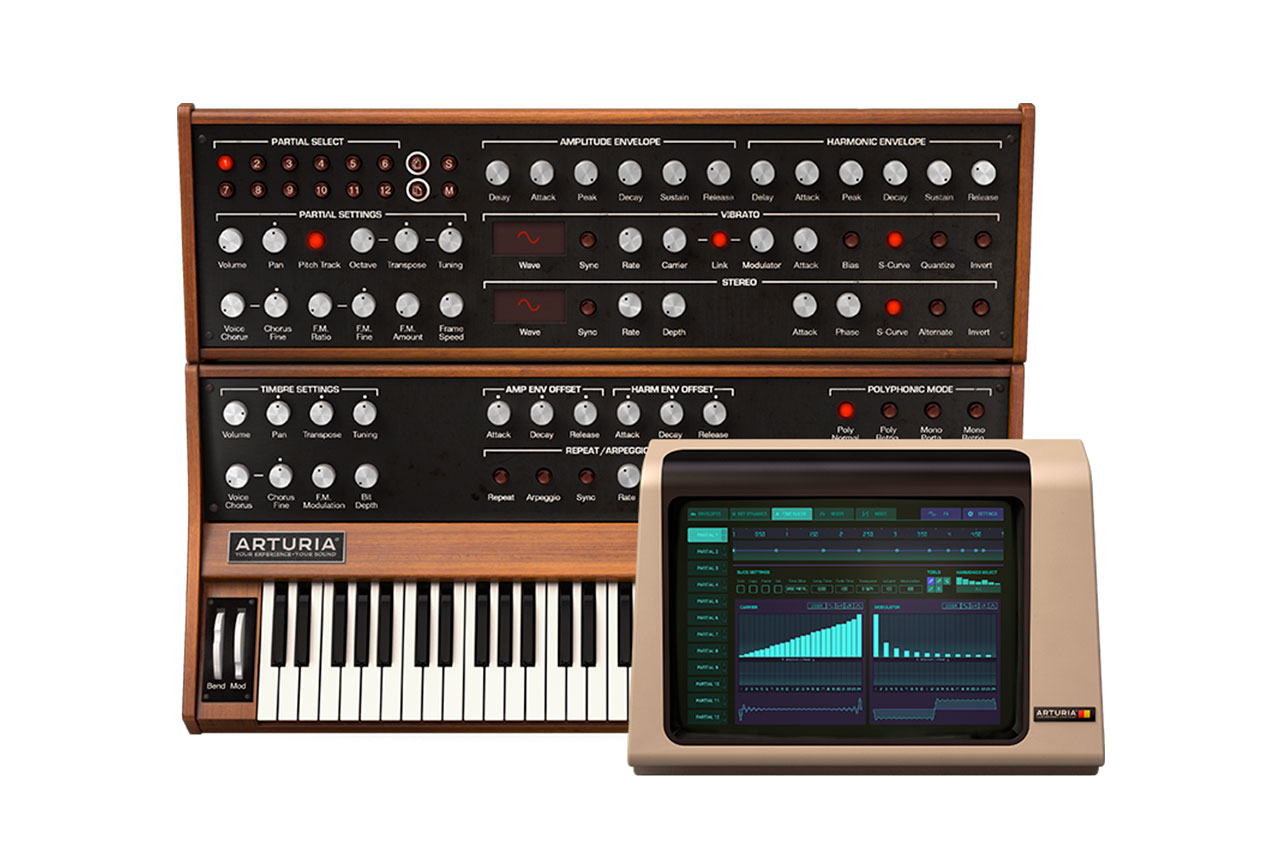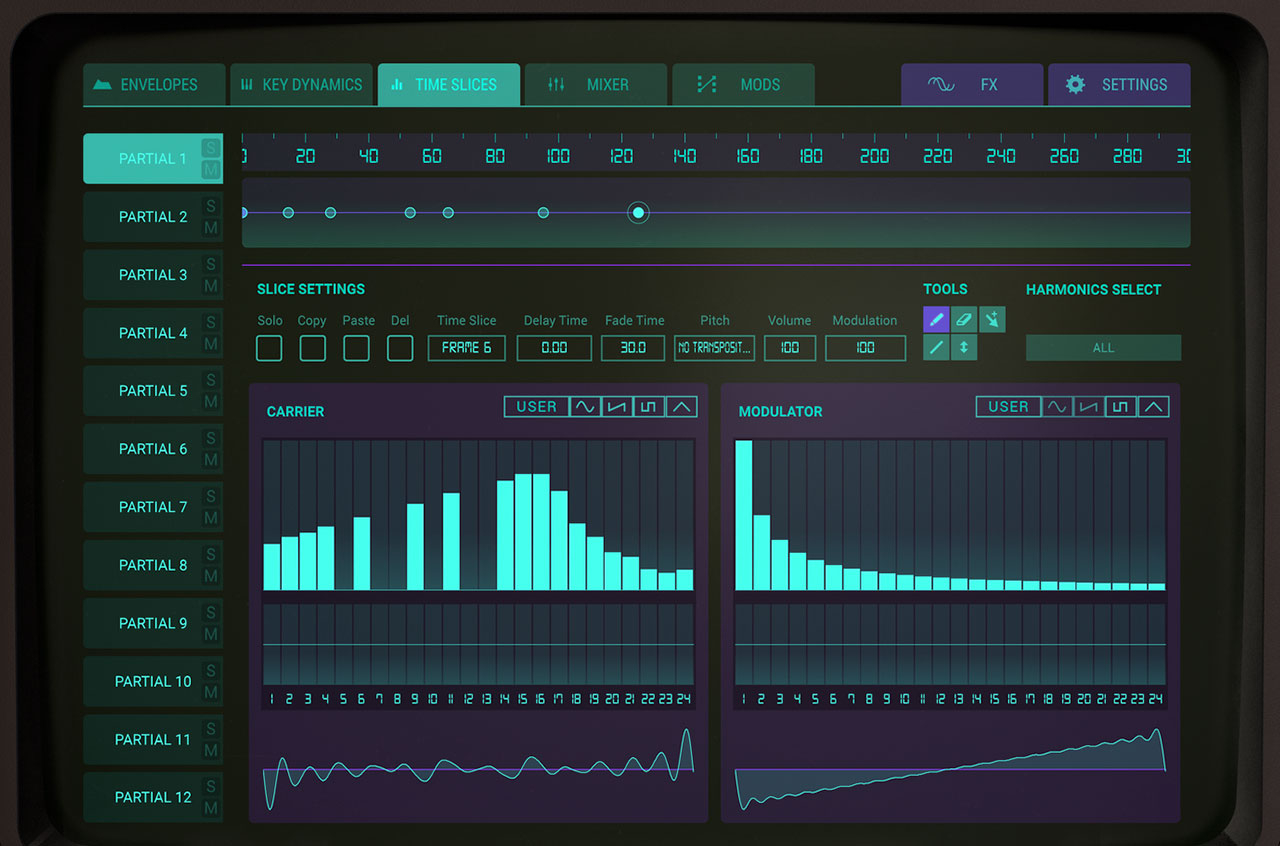- The New England Digital Synclavier may not have the reputation of its early digital synth peers, but it was one of the most powerful music-making machines of its era. In fact, the concept of an off-the-shelf sound card that talked to a piece of software didn't exist before its time. Many of the technologies that allowed a computer to process audio in real-time had to be developed from scratch, which meant the Synclavier was out of the price range of even the most successful musicians and sound designers. (Though not for Michael Jackson, who famously used the synth in the intro to "Beat It.") French software developers and emulator experts Arturia have finally brought the Synclavier into the studios of mere mortals who couldn't afford the huge price tag, which has been known to reach half-a-million dollars. But why was the synth so desirable? And what has Arturia done to give its innovative design a 21st century makeover?
You need to understand the Synclavier V's core concepts to get the most out of it. It's based around a form of sound design called the Partial Timbre Method, which allows you to manipulate individual subcompoents of the sound—partial timbres—which have a carrier waveform with 24 harmonics that can be shaped using the mouse. The fun begins when these harmonics are modulated by a waveform with up to 24 custom harmonics, each of which can be shifted out of phase. Synclavier V then allows you to chain up to 50 of these carrier and modulator waveforms together over time with morphing Frames to create a constantly evolving timbre that's beautifully digital.
Arturia has done an excellent job of fitting so much potential into a friendly GUI. There are two views to Synclavier V: one to mimic the hardware keyboard and the other to emulate the Fairlight-style screen that came with the original. If you're on a laptop, you'll more than likely have to shrink the screen to 60% from the drop-down menu. Timbre settings, some basic envelopes and polyphony settings are all you get on the initial keyboard page, so you'll need to hit the expand button to access more meaningful controls. To dive deeper, we need to head to the SCR section where you'll greeted find the Envelopes tab. All 12 partials—the name for a carrier and modulator pair—have their own harmonic and amplitude envelopes while the Key Dynamics tab allows you to set the volume sensitivity of specific keys for specific partials. Already, things are starting to get interesting.
However, it's the Time Slices section where Synclavier V really shines. Here you can increase or decrease individual harmonics of the carrier and the modulator, add or remove new Frames, copy and paste settings between slices, set the fade time as the waveforms transform, set the modulation amount and much more. Each Partial tab has its own settings so by the time you work your way through all 12 you could have some seriously unique, constantly evolving sounds on your hands. And that's before you even make your way to the Mixer tab. Here you'll find Volume, Pan, Transpose, Chorus and Fine Chorus, the former shifting though harmonics to create chords, the latter a traditional chorus effect. Each partial can be Solo'd and Muted to set your targets on one particular aspect of the sound, before un-soloing to hear it in its full glory. It has to be said that the Synclavier V is a true beast of a synth and it's remarkable to think it was capable of even a quarter of its features when it was originally released.
What's also impressive is how Arturia has ported that power to an approachable interface. Sound-wise, it does classic FM and DX7-style sounds very well. Plucks, bells and keys all sound lush but it's much more flexible, recreating CS80-esque strings and complex sound effects with ease. The presets included do a good job of showing off the machine but you need to dive in yourself to get the most out of the plug-in. Though it may not follow conventional synthesis routes, the learning curve isn't too steep and even if you don't know what you're doing, Synclavier V rewards experimentation.
Speaking of convention, if you want instant results, using the harmonic and amplitude envelope controls on the most basic view is enough to drastically alter a sound. It's not too different from filter and amp modulators but the harmonics bring a bite and grit that only early digital synths can boast. And if you're looking for even more old school charm, normalise, bit depth, oversampling and noise floor controls are all present on the master section, as well as other welcome effects. What's more, the whole thing barely touches the CPU meter. Even when you're using all 12 partials it delivers a load of only a few percent.
UVI Workstation's The Beast is one of the few alternatives to the Synclavier V, but because it's sample-based, it can't match the power of Arturia's version. You have to know what to expect with the Synclavier V. It's no Moog Modular and won't give you super sub-bass or rich, thick analogue mids. It's unapologetically digital and can even be thin at times, but with its extremely powerful modulation and sound design potential, anyone who likes getting their hands dirty with synthesis will fall in love with this plug-in. With some extra EQ, saturation and some choice plate reverbs, it's a beautiful instrument.
Ratings /
Sound: 3.8
Cost: 4.4
Ease of use: 3.5
Versatility: 4.5
 Speaking of convention, if you want instant results, using the harmonic and amplitude envelope controls on the most basic view is enough to drastically alter a sound. It's not too different from filter and amp modulators but the harmonics bring a bite and grit that only early digital synths can boast. And if you're looking for even more old school charm, normalise, bit depth, oversampling and noise floor controls are all present on the master section, as well as other welcome effects. What's more, the whole thing barely touches the CPU meter. Even when you're using all 12 partials it delivers a load of only a few percent. UVI Workstation's The Beast is one of the few alternatives to the Synclavier V, but because it's sample-based, it can't match the power of Arturia's version. You have to know what to expect with the Synclavier V. It's no Moog Modular and won't give you super sub-bass or rich, thick analogue mids. It's unapologetically digital and can even be thin at times, but with its extremely powerful modulation and sound design potential, anyone who likes getting their hands dirty with synthesis will fall in love with this plug-in. With some extra EQ, saturation and some choice plate reverbs, it's a beautiful instrument. Ratings / Sound: 3.8 Cost: 4.4 Ease of use: 3.5 Versatility: 4.5
Speaking of convention, if you want instant results, using the harmonic and amplitude envelope controls on the most basic view is enough to drastically alter a sound. It's not too different from filter and amp modulators but the harmonics bring a bite and grit that only early digital synths can boast. And if you're looking for even more old school charm, normalise, bit depth, oversampling and noise floor controls are all present on the master section, as well as other welcome effects. What's more, the whole thing barely touches the CPU meter. Even when you're using all 12 partials it delivers a load of only a few percent. UVI Workstation's The Beast is one of the few alternatives to the Synclavier V, but because it's sample-based, it can't match the power of Arturia's version. You have to know what to expect with the Synclavier V. It's no Moog Modular and won't give you super sub-bass or rich, thick analogue mids. It's unapologetically digital and can even be thin at times, but with its extremely powerful modulation and sound design potential, anyone who likes getting their hands dirty with synthesis will fall in love with this plug-in. With some extra EQ, saturation and some choice plate reverbs, it's a beautiful instrument. Ratings / Sound: 3.8 Cost: 4.4 Ease of use: 3.5 Versatility: 4.5